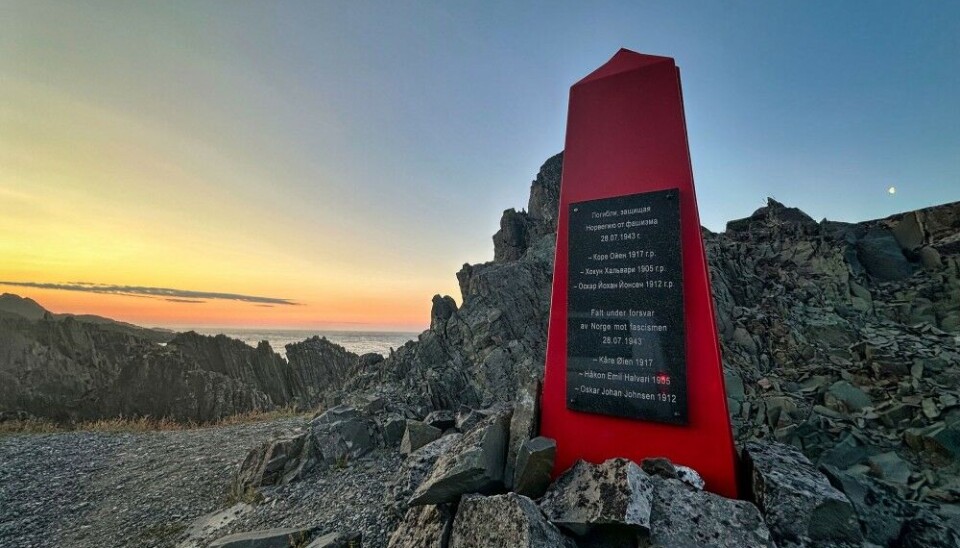
Mayor wants to tear down Russian-initiated war monuments
“I want them removed as they are misused by sympathisers and Russian authorities,” says Vardø Mayor Tor-Erik Labahå.
The two red-painted metal-cairns on the Varanger Peninsula are commemorating Norwegian partisans who helped NKVD and the Red Army collect information about nazi-German movements in the northeast corner of occupied Norway.
“The so-called memorials in Persfjord and Langbunes look more like border poles than memorials,” says Vardø mayor Tor-Erik Labahå to the Barents Observer.
Made in Russia, the two cairns have the names of the Norwegian partisans, first written in cyrillic letters, then in Norwegian.
Unlike many other memorials from Second World War in northern Norway, these two were initiated and made by FSB-affiliated officials from Murmansk and Russia’s Consulate General in Kirkenes. One was erected in 2011, the other in 2018.
“I want them removed as they are misused by sympathisers and Russian authorities,” Labahå says.
Russian diplomats, officials and private persons from Murmansk and Arkhangelsk have frequently highlighted the memorials as symbols of common understanding, underlining that historical ties and private friendship across borders in the north are not affected by disagreements and tensions between Oslo and Moscow.
“The commemorative activism carried out for the last decades, when we look at it retrospective, has been used by our neighbour in the East in a completely different way than what was intended. This applies not only in Norway but in most [of Russia’s] neighbouring counties in Europe,” the Mayor of Vardø says.
In recent years, Soviet monuments of Second World War have come down across Europe. Many see them as symbolic of historical Kremlin oppression.
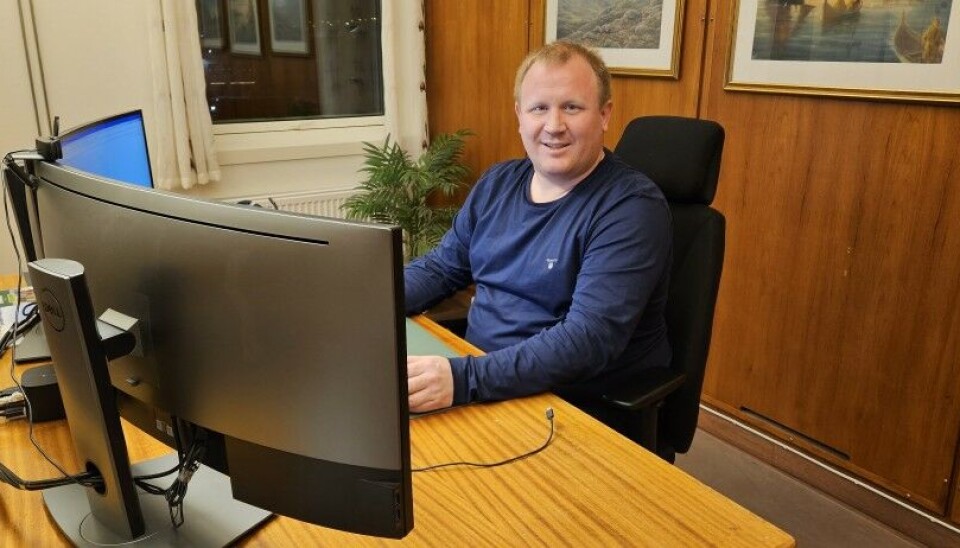
The Barents Observer could earlier this year tell the story on how Sergei Goncharov, with close ties to FSB, for years teamed up with locals in Vardø. His main agenda was to promote joint Norwegian-Soviet Second World War history from 1944, when the Red Army helped liberate Kirkenes and Varanger area.
Central in creating the memorials in Persfjord and Langbunes was Shchit (“Shield”), the FSB veteran organisation in Murmansk founded by Gennady Gurylev, a regional KGB leader from Soviet times. The cairns were made in Russia and paid by the actors from Murmansk.
In the following years, FSB-affiliated people from Murmansk frequently came to Vardø and flower-ceremonies were arranged at the memorials. In 2019, Russia’s military-patriotic Yunarmiya (“Young Army”) came.
A year after, in 2020, locals in Vardø informed about the idea to import a Soviet T-34 tank to be displayed outside the Partisan Museum in Kiberg, on the coast to the Varanger fjord from where Russia can be seen on the east shores.
“With increasing intensity since Crimea in 2014, we have seen several instances where state-sponsored Russian actors have worked to export the official – but distorted – narrative about the Great Patriotic War,” said Joakim Aalmen Markussen, postdoc at UiT The Arctic University of Norway and expert on Russia’s monumental memory politics in northern Norway.
Markussen, who recently published an article in Nordisk Østforum about the topic, elaborated:
“It would enable the Kremlin to claim that Norway supported Russia’s narrative about WWII. In turn, this would entail that Norway also supported the distorted worldview that the Kremlin has built on top of the WWII narrative, namely that Russia is under attack by the West, that it must fight the alleged spread of neo-nazism and other paranoid conspiracies.”
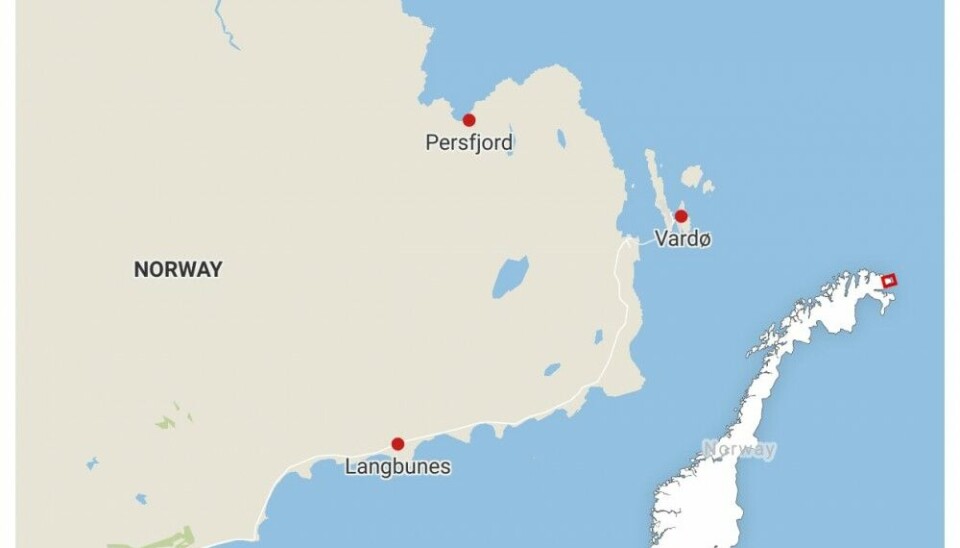
Moscow’s diplomats based at the Consulate General in Kirkenes have since Russia’s illegal annexation of Crime in 2014 found a strong interest in giving a boost to Second World War history in Norway’s northeast corner.
While the diplomats stir up emotions among Norwegians, especially after 2022, plans are now underway for a new Russian celebration as the 80th anniversary of when the Red Army drove Nazi-German forces out of Kirkenes i sailing up.
Vardø Mayor Tor Erik Labahå underlines that he is of course are very thankful to the partisans in the Varanger region during Second World War.
“Norway are forever thankful for their contribution.”
The municipality of Vardø in January this year cancelled its friendship agreement with Arkhangelsk in northern Russia. This as a protest against Russia’s war on Ukraine.
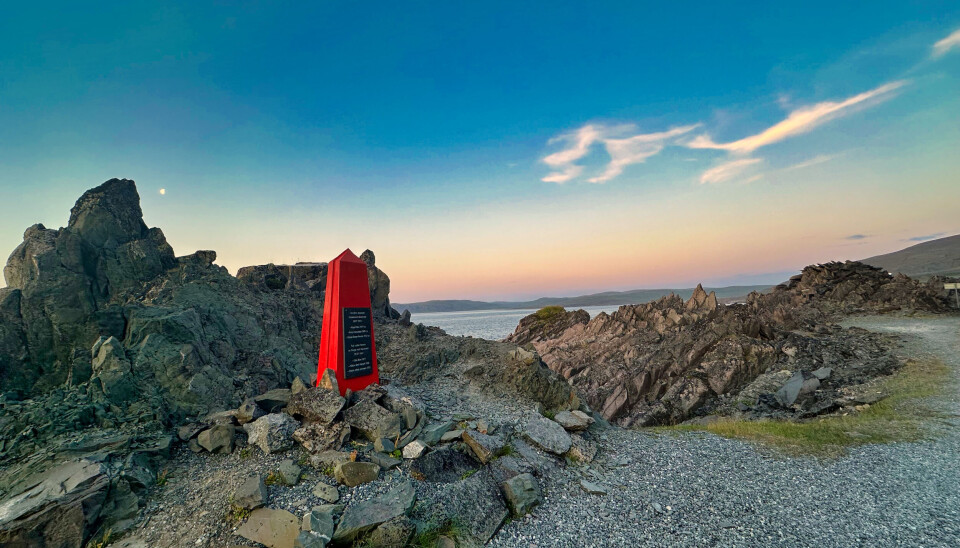
It was local newspaper Østhavet that first reported about the wish to tear down the monuments.
Although in Vardø municipality, it is the Finnmark estate (“Finnmarkseiendomen, FeFo”) that owns the ground where the monuments are erected. The question about the future of the memorials is expected to be raised at a coming board meeting.
Member of the Board of Directors, Kurt Pasvikbamsen Wikan, is not happy about the Soviet-red Russian cairns.
“They look like rockets and they are not nice to look at,” Wikan says to the Barents Observer.
Mayor Labahå would also like to see another Russian-initiated memorial taken down, the one commemorating Soviet pilots that lost their life during Second World War.
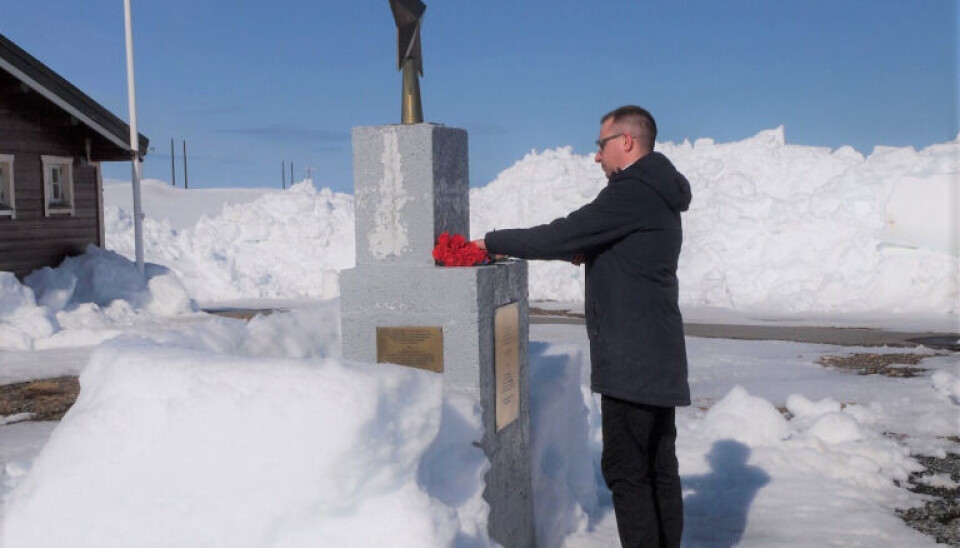
The monument was erected in 2019 supported by the Norwegian-Russian Friendship Association in cooperation with the Norwegian Clubs in Murmansk and Severomorsk. The latter is the town home to the headquarters of Russia’s military Northern Fleet.
Russia’s Consulate General in Kirkenes assisted with the monument.















